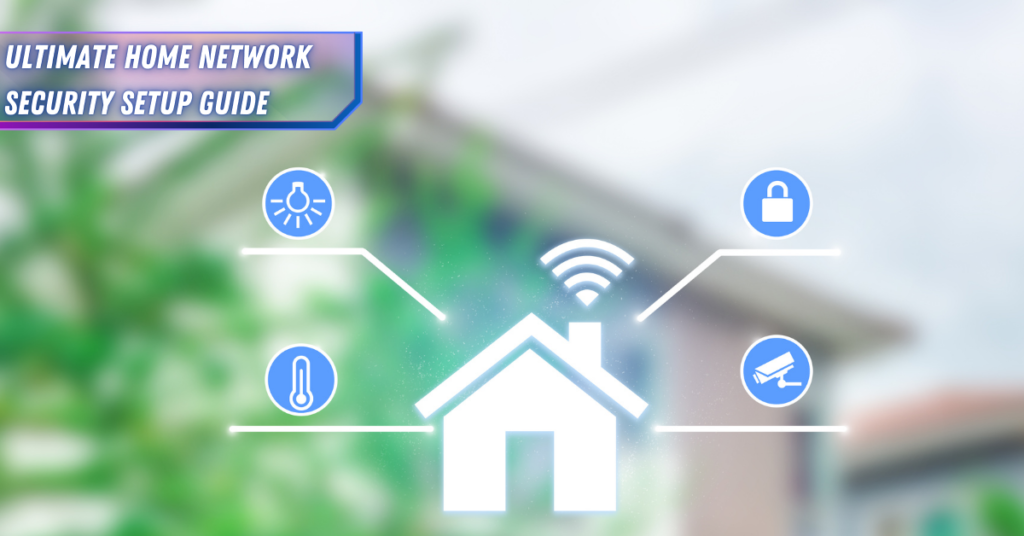Did you know that 90% of organizations experienced at least one printer-related data breach in 2023? I’ve spent the last 15 years in IT security, and let me tell you – printer security isn’t the most exciting topic until someone hacks your network through that innocent-looking printer in the corner! Let me walk you through the 10 essential wireless printer security tips to keep your home security top notch.
Printer Security in Home Networks – Best Practices
Your wireless printer isn’t just a convenient home and office tool – it’s potentially an open door for cybercriminals. I’ve spent years helping businesses and homes secure their printing infrastructure, and I can tell you that most security breaches happen due to overlooked basic security measures. Let’s look at 10 critical printer security steps to lock down your printer and protect your sensitive data from unauthorized access.
1. Change Default Passwords
You know what drives me crazy? Those default passwords that come with printers! It’s like leaving your house key under the doormat – everyone knows where to look. First things first, change that default password to something strong like “Pr1nt3r_S3cur3!” – using a combination of uppercase, lowercase, numbers, and symbols.
2. Install and Enable Firewall
Let’s talk firewalls – your printer’s bouncer, if you will. I always tell my students (yep, I teach cybersecurity workshops on weekends) that a properly configured firewall is like having a strict guest list at an exclusive club. Use your router’s firewall and consider additional third-party firewall software to regulate network access.
3. Update Printer Firmware
Firmware updates are like vitamins for your printer – not exciting, but absolutely necessary. I’ve got a monthly reminder on my phone to check for updates. Sure, it’s a bit annoying, but so is explaining to your boss why confidential documents ended up in the wrong hands! Regular updates patch security vulnerabilities and improve functionality.
4. Disable Remote Printing
Remote printing is convenient, I get it. But you wouldn’t leave your front door open just because you might want to pop in quickly, would you? One of my clients kept it enabled 24/7 and guess what? Their printer started spitting out crypto mining instructions at 3 AM! Turn it off when you don’t need it.
5. Monitor Print Activities
Speaking of monitoring, let’s talk about printer logs. You wouldn’t believe the stories hidden in there! I once caught an after-hours printing spree that turned out to be an employee preparing to leave with company data. Set up alerts for suspicious activities like failed login attempts – think of them as your printer’s security cameras.
6. Secure Printer Ports
Here’s a pro tip I learned after years of troubleshooting: stick to IPPS via SSL port 443. I know it sounds technical, but trust me, it’s like having a secure tunnel for your print jobs. Disable all those unused ports – they’re just open windows waiting for someone to climb through.
7. Use a Private Network
Your printer needs its own VIP section. Keep it on a private network only and avoid connecting to public networks like the plague. I’ve seen too many businesses learn this lesson the hard way when their printers became vulnerable through public network exposure.
8. Enable Encryption
Setting up WPA3 encryption is crucial – think of it as your printer’s personal bodyguard. I remember helping a small business owner who thought basic password protection was enough – spoiler alert: it wasn’t! Make sure your print job data is encrypted too. It’s like sending your documents in an armored car instead of a bicycle basket.
9. Implement Access Controls
Here’s something most people overlook: role-based access controls. I set these up like a digital organizational chart. The marketing team doesn’t need access to HR’s printer settings, right? It’s about giving people exactly what they need, nothing more. Limit who can use the printer and what features they can access.
10. Power Off When Not in Use
And please, for the love of cybersecurity, turn off your printer when you’re not using it! I know it sounds simple, but you’d be amazed how many threats this eliminates. One of my clients reduced their security incidents by 40% just by implementing this practice. An unused printer should be an unplugged printer.
Final Thoughts
Remember, printer security isn’t a one-and-done deal. It’s like maintaining a car – regular check-ups and timely repairs keep everything running smoothly. Follow these 10 steps, and you’ll be well on your way to a more secure printing environment. Trust me, your future self will thank you for taking these precautions!
Got questions about securing your wireless printer? Drop them in the comments below – I love helping folks keep their networks safe! After all, we’re all in this cybersecurity journey together.



